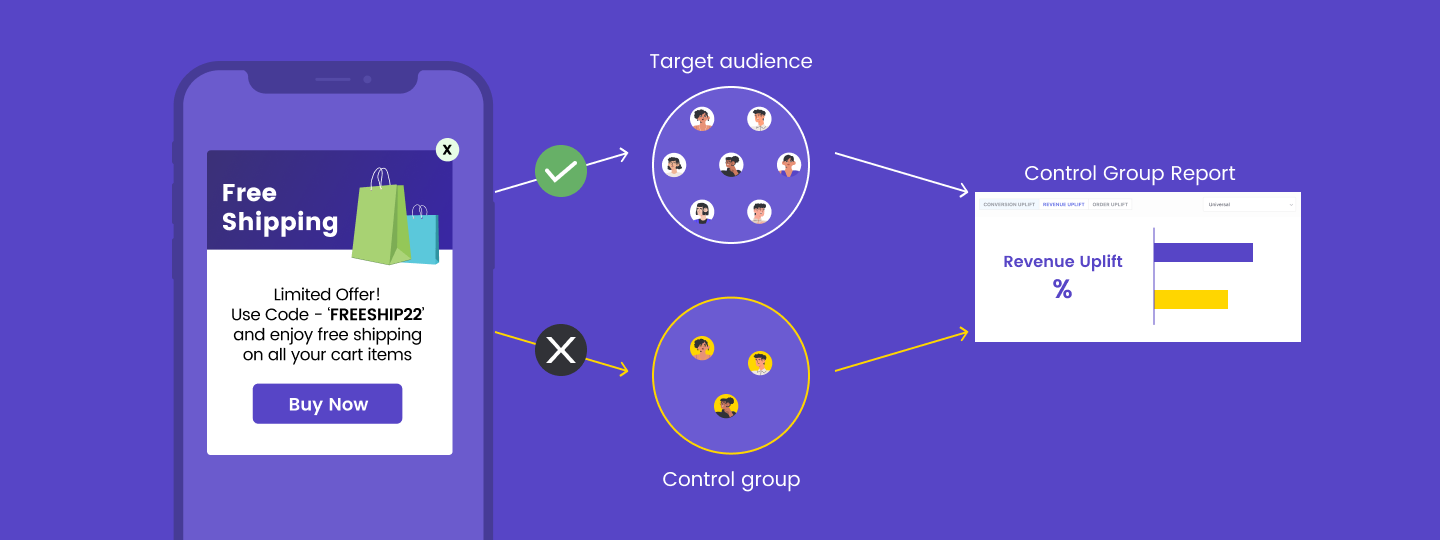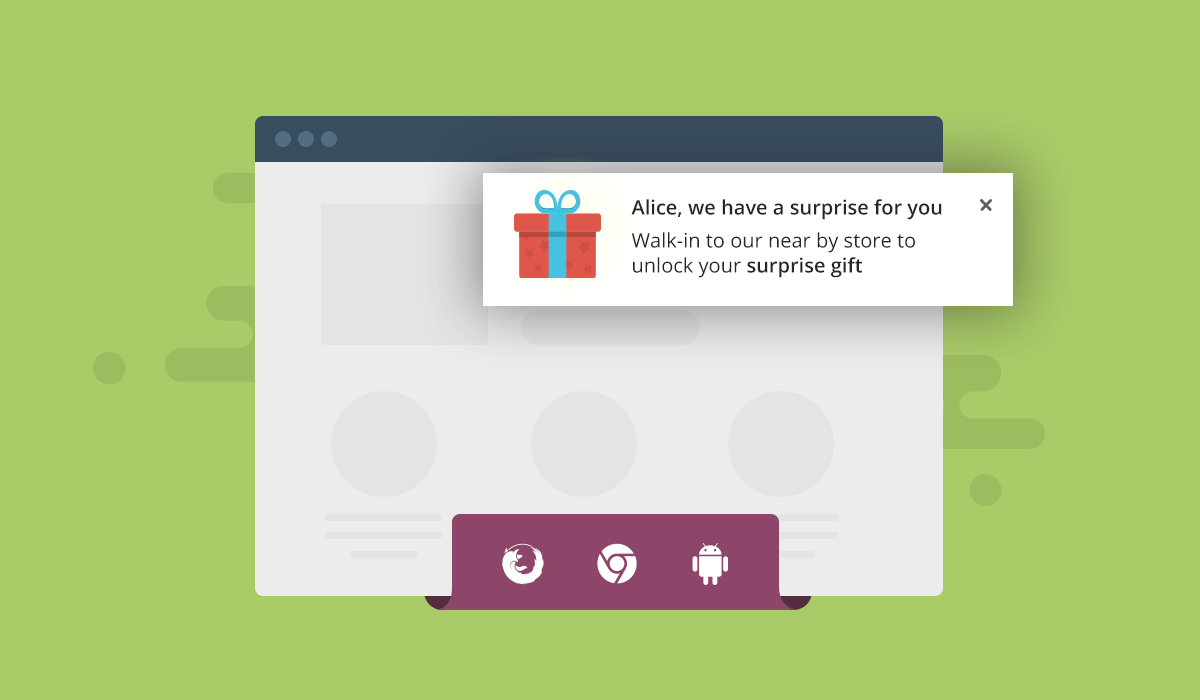
Today, we’re thrilled to launch the newest member of our engagement suite – Web Push.
What is Web Push?
What do my end users experience?
How do I send these Web Push messages?
Why does the world need this?
To sum it up
Web Push, What?
In a nutshell, Web push is a channel to engage your website audience with actionable messages on desktop as well as mobile – even if your users aren’t presently on your website! Sweet?
What do my end users experience?
Here’s quick primer on how it works for your end users.
When users visit your website on desktop or mobile, they’re shown an opt-in prompt requesting them to “Subscribe” to your brand’s notifications.
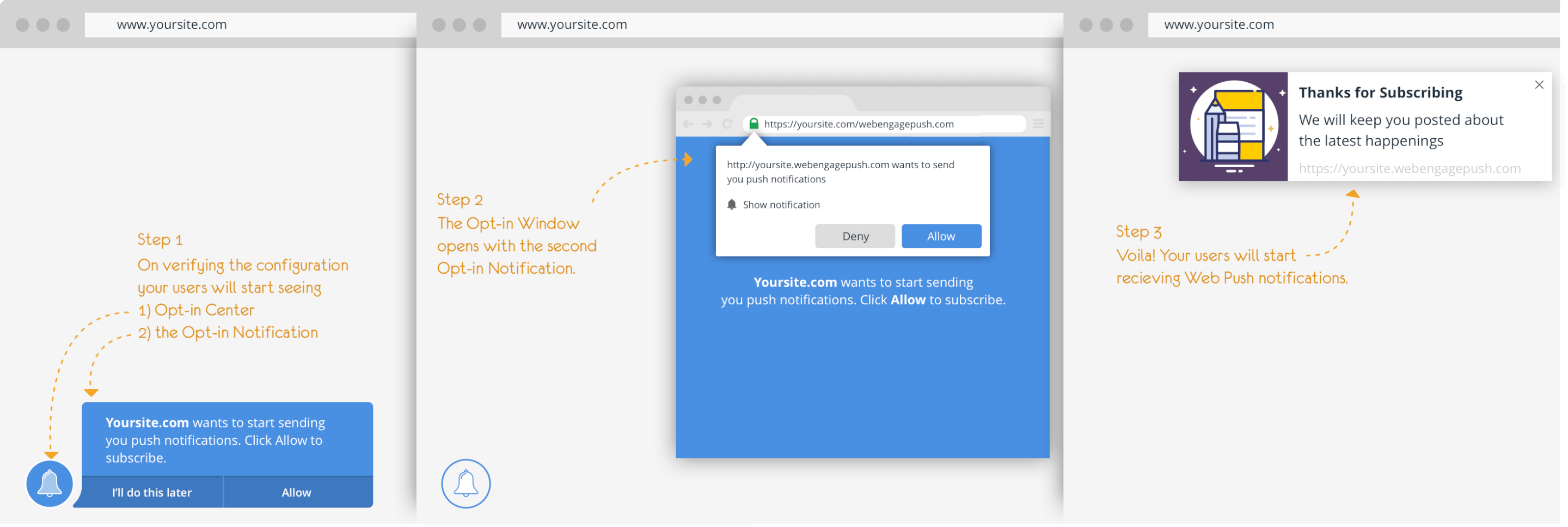
If they opt in, they become a part of your “Web Push Subscriber” base. Beyond this point, your brand is able to reach out to these subscribers at any point of time with highly personalized messages.
These messages are actually delivered through your users’ web browsers. This means that the user need not be on your site. Heck your website tab can even be closed. So long as the users’ browser is open (and the user is connected to Internet o’course), your message will be delivered. Alternately, whenever the user opens their browser next within a reasonable timeframe, your message will be delivered.
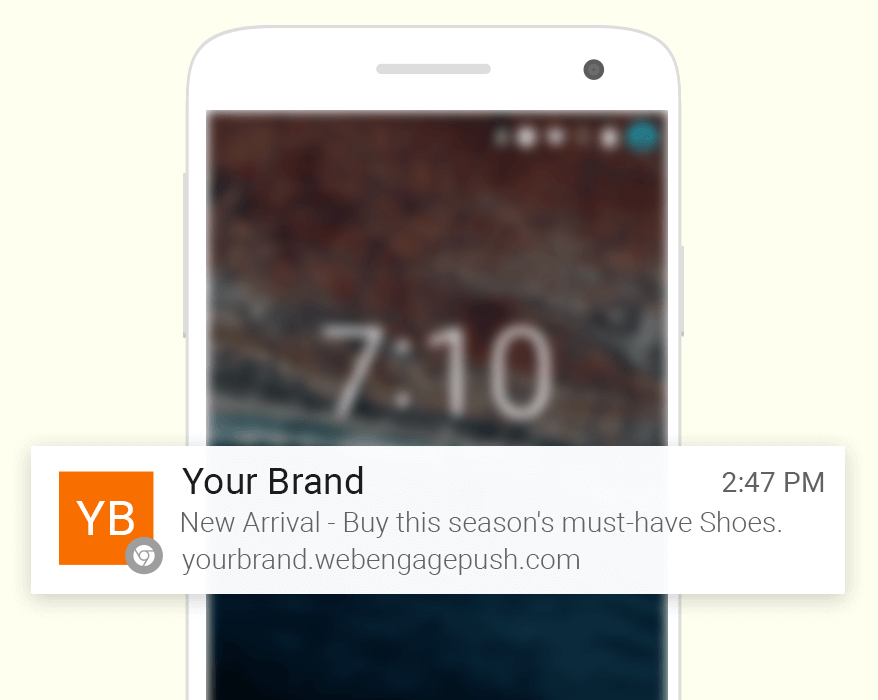
Web Push works on desktop (Chrome, Firefox) as well as mobile web (Chrome on Android). In fact, on mobile devices, the browser process is almost definitely running in background. Which means if your users subscribe through their mobile device, their experience of receiving push notifications is almost as if they had your app installed and your brand was reaching out to them with a notification in their system tray. In fact, that’s exactly how it is.
Every piece of experience described above is customisable. Right from the positioning, branding, messaging or timing of the opt-in prompt to completely getting rid of this two step opt-in flow and instead going with a single step browser prompt alone. This has its pros and cons, but that’s for another time and post.
What’s my experience like? How do I send these Web Push messages?
The core purpose of WebEngage is to help you build a cohesive communication strategy for your audience across channels. We did that across mobile app push notifications, in-app messages, web notifications and surveys, emails, SMS. Today, we’re happy to extend that same experience to Web Push.
1) Design campaign creative. Personalize. A/B test.
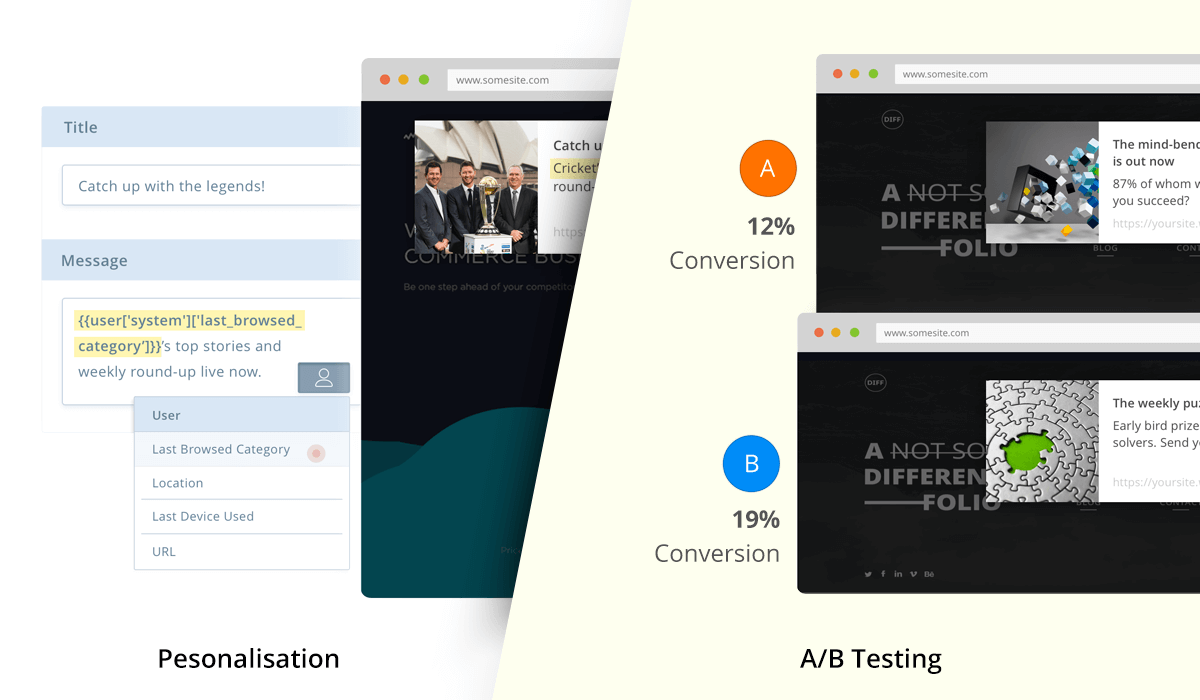
The first step is to design your campaign creative. Upload an image, fill in a brief engaging copy. Attach a CTA making the entire message clickable. Watch out for more options here coming soon (additional CTAs, playing a sound etc.). As with any other channel for WebEngage – any campaign is an experiment. You can create multiple variants of the message to test which version works better. Very importantly, you can personalize the message with users’ profile or transactional data.
2) Select target audience
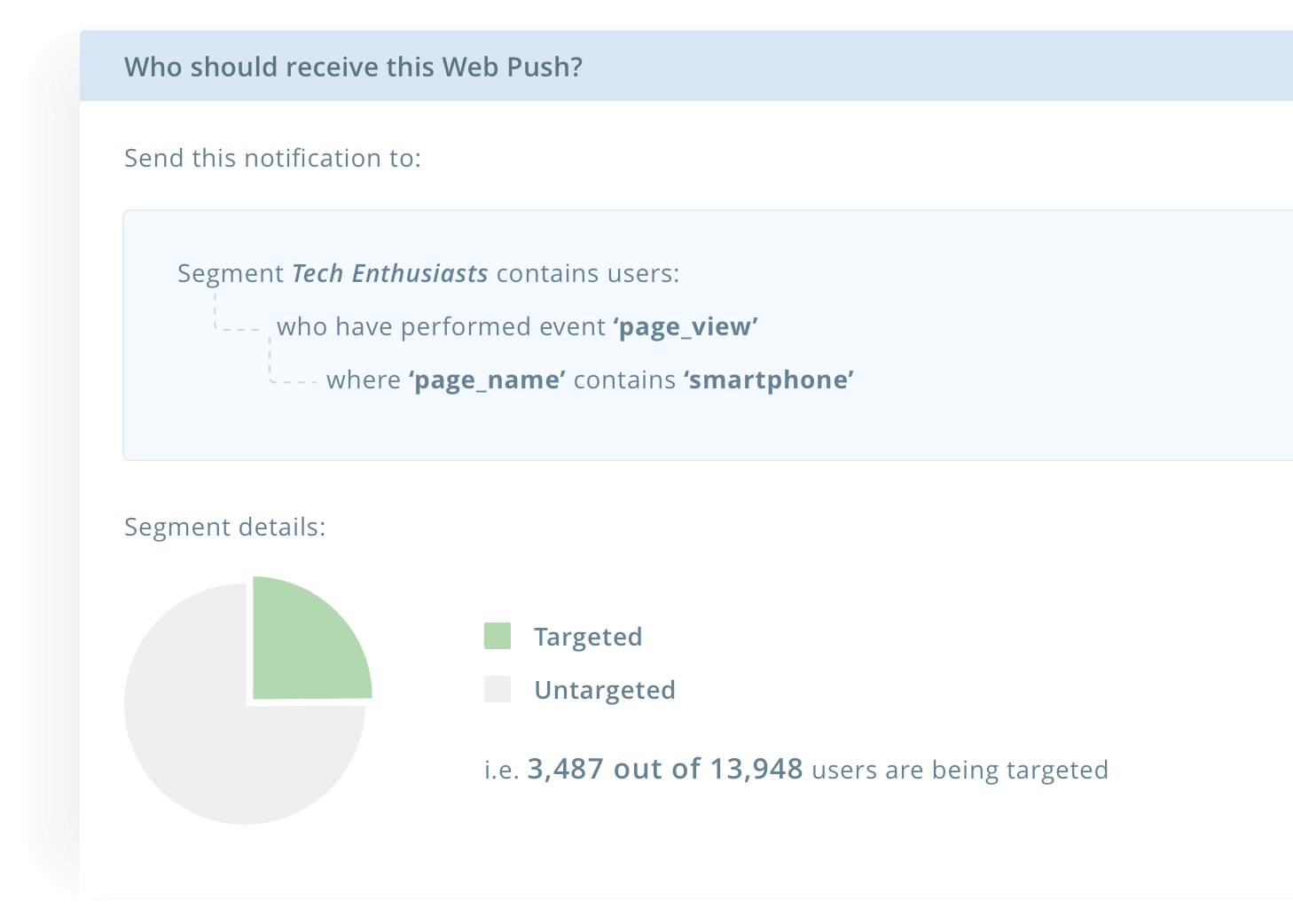
Within your web push subscriber base, you can further target an audience segment based on their profile and preferences. Segmentation capabilities include demographic data, transactional history (recency, frequency, monetary value), category affinity, behavioral activity or inactivity and much more.
3) Send now / schedule / select a trigger
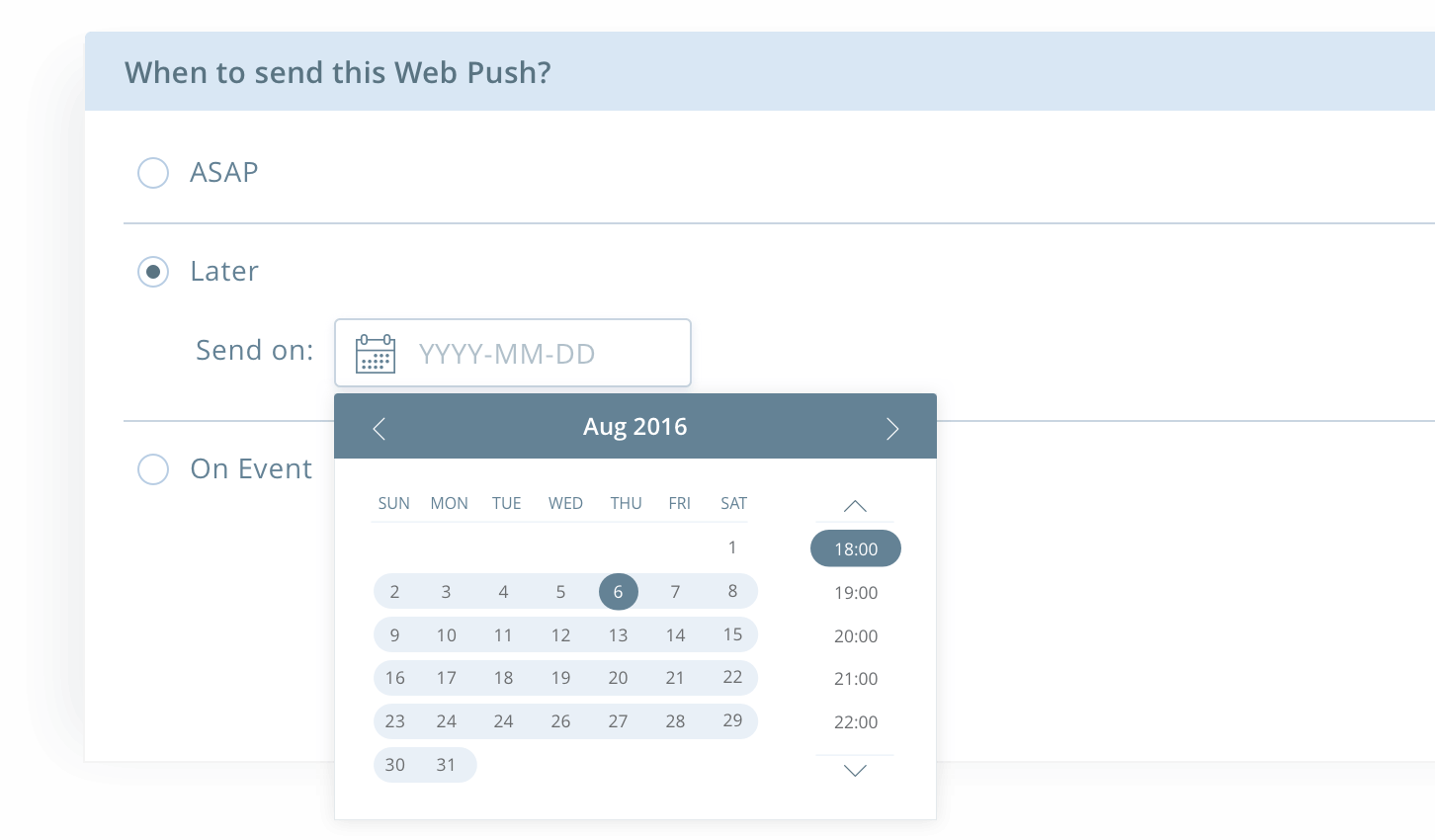
You can choose to send your web push message right away, or at a later date, or on a recurring schedule, or even in response to a user triggered workflow.
4) Measure impact in real-time
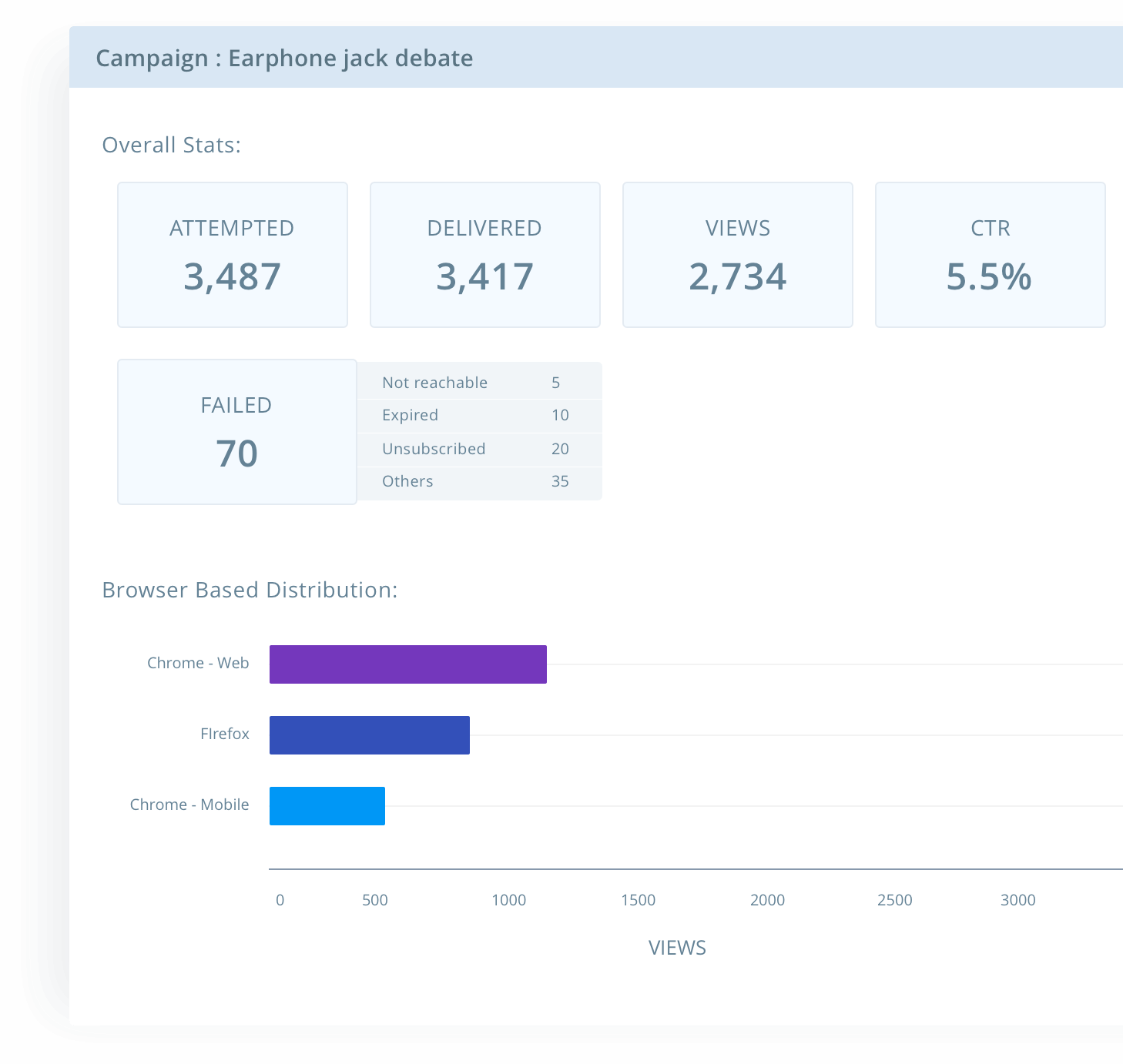
As soon as the campaign goes live and users start engaging, you get to see real-time reports on how effective the campaign is, how well the variants are performing if any. Soon, you’ll also be able to track what business impact these campaigns have in terms of delta in transactions, revenue, reactivations etc.
If this workflow of creating, targeting, triggering, measuring seems familiar to you as a WebEngage customer, that’s entirely intentional. It’s a proud moment for us not just as a business but also as an engineering team that has built a robust communication engine foundation enabling introducing new and relevant channels in a jiffy. All bundled with channel agnostic capabilities such as A/B testing, personalization, targeting user segments, triggering based on user actions etc. Unlike siloed tools that often don’t even tell you who your subscribers are, just that you have 10,000 of them and force you to use evil batch and blast techniques – we believe in putting your users’ first, for your own benefit. Understand your audience. Engage better. No matter the channel.
Why does the world need this?
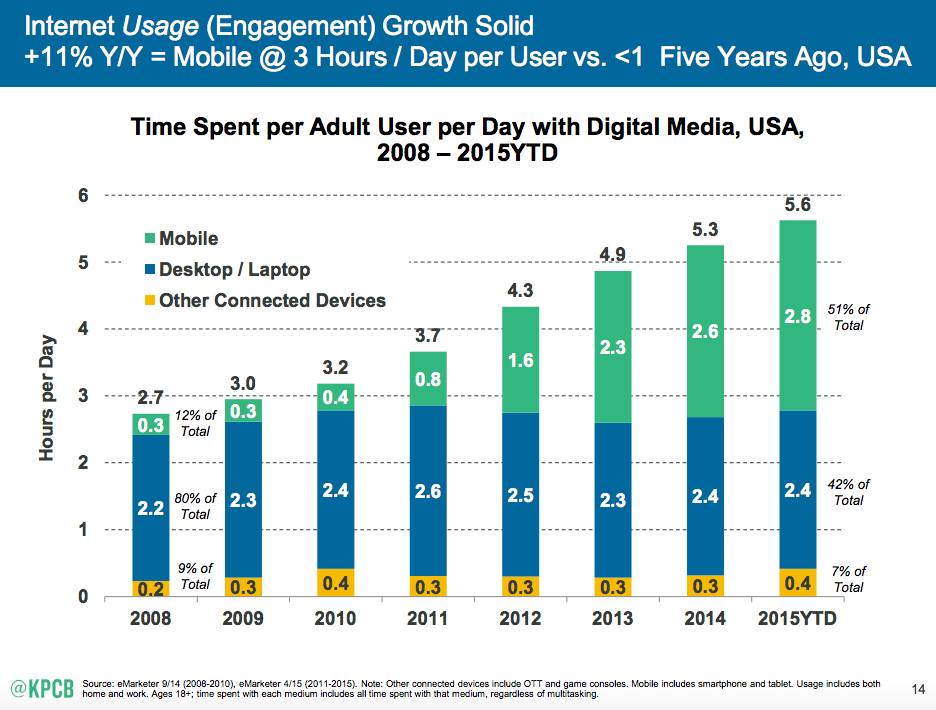
Despite the advent of the mobile app economy, consumers’ desktop digital media time stands at a still significant 42%. That’s plenty of users still using your website on their desktops / laptops.
There’s an interesting trend in mobile web engagement as well. Consumer transactions in this digital age are increasingly multi-touch and multi-channel. Often transactions start and end on different channels. According to Google, 33% of mobile consumers start their transaction research on brand websites. That’s actually much higher than brand apps (26%).
Browser Push Notifications, even for the two major web browsers, Chrome and Firebox, gives you access to almost 90% of these users.
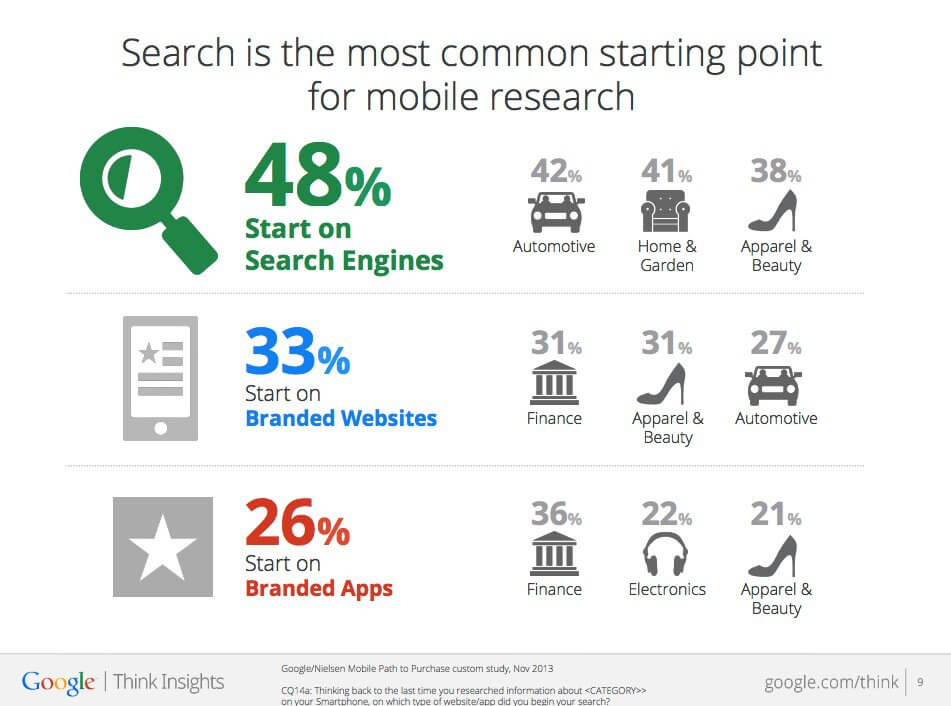
The barrier to sending your first mobile web push is an impression (user has to visit your site on mobile once) and an opt-in (user has to permit you once to send push notifications). The corresponding barrier to sending your first app push is getting the user to install your app. Significantly harder and costlier.
And it’s not just about the first push, is it. The challenges around app retention, risk of uninstallation etc. leads to a fluxing reachability on this channel. Whereas, how likely is the user to uninstall the browser on their mobile?
O’course there are pros and cons when weighted against app push notifications, such as this technology working only on Chrome browser on Android. That’s still a sizeable chunk of addressable audience potentially reachable on a relatively low friction channel. And technology will only evolve (e.g. Firefox on Android may soon support web push).
To sum it up
Web Push is an extremely effective channel to engage, retain and grow your consumer audience. And most importantly, it blends seamlessly into our core vision of helping you build a cohesive communication strategy across your users’ lifecycle journey – regardless of the channel. Our core mantra is to help you engage the right users, at the right time, with the right message. For our engineering team, this meant building a communication engine that enables targeted, triggered and personalized communication – over your consumers’ channel of preference.
Here’s to humanised marketing!





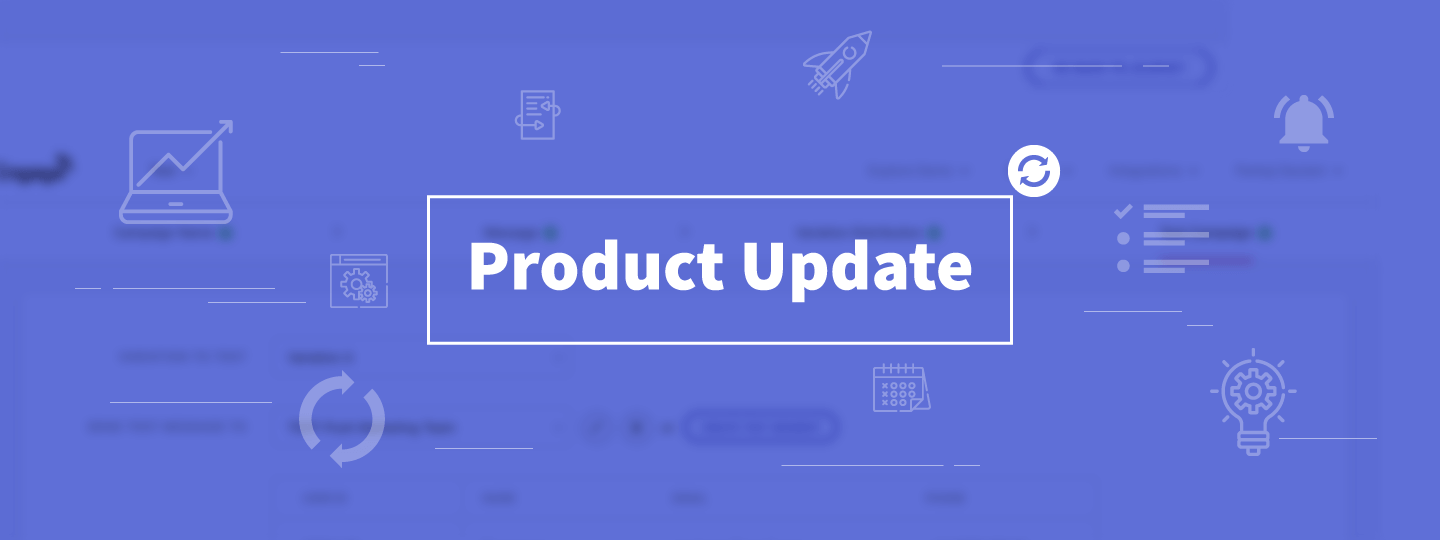


 Harshita Lal
Harshita Lal